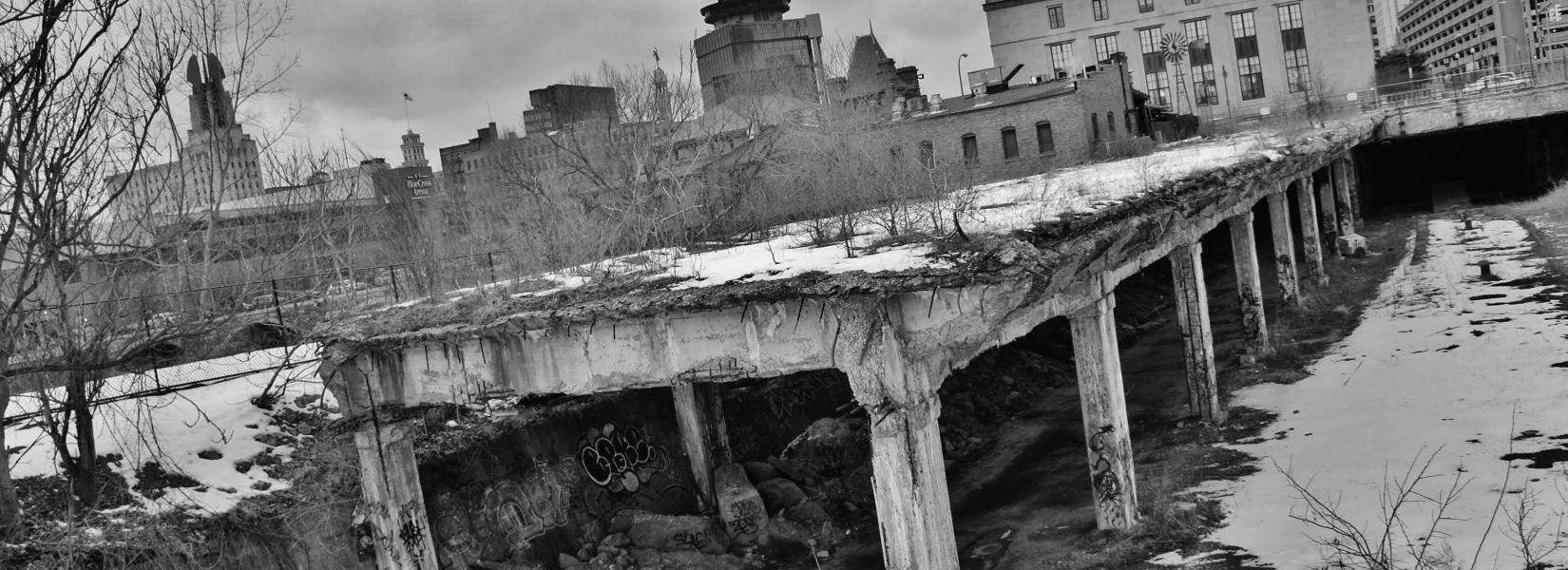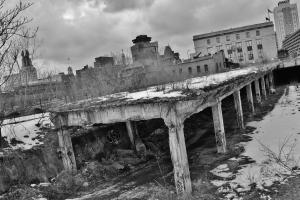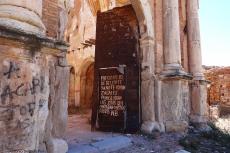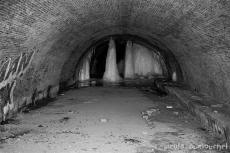The origin of this construction is surprising. It must first be known that it is located at the top of an artificial mountain made of rubble and other residues from the buildings destroyed during the Second World War. Then, this mountain itself...
The abandoned Rochester Subway
When high-speed expressways kill subways
In 1918 the Erie Canal was re-routed to by-pass downtown Rochester, and in 1919 the abandoned canal was bought to serve as a grade-separated route for the heavy "inter-urban" streetcars that were seen as obstructing surface street traffic. Tracks were laid in the former canal, now a dry open trench. Only in the downtown area was the subway in a tunnel, under Broad Street. The cars were powered by overhead electric wires, like streetcars (such as current systems in Buffalo and Seattle), not an electrified "third rail" (such as New York and Toronto). The line opened for passenger traffic in 1927, after several construction delays.
The Rochester Subway was plagued by limited resources and a transportation and land-use system that already was becoming more and more automobile-oriented. Rochester abandoned all surface streetcars by 1940, leaving the subway as a single line of what had been a much more comprehensive system. While ridership peaked during WWII due to gasoline and rubber rationing, it quickly declined after the war. The region's population was growing, but in an auto-oriented way as new, low density developments sprawled across suburban towns far from the route of the subway, which was never extended.
In addition, the subway suffered from the meandering, northwest to southeast route that was pre-determined by the route of the old Erie Canal. While this route had advantages for a long-distance canal built in the 1810s and 1820s, it was not necessarily a good route for intra-city transit in the 20th century. Federal funds sought to extend the eastern terminus to Monroe Avenue in Brighton in the 1930s were denied.
By the late 1940s and early 1950s, plans were developed for the system of high-speed expressways in and around Rochester. The eastern part of the subway route was chosen for a portion of Interstate 490. With declining ridership and governmental policies that supported private automobile over public transportation, there was little resistance to the abandonment of the subway. Passenger service ceased June 30, 1956.
The western end of the former subway was still used for freight traffic through the 1970s. Gannett used the tunnel for delivery of newsprint to its downtown facility at Broad Street and Exchange Boulevard until new presses were installed for the Democrat and Chronicle at Canal Ponds Business Park in the Town of Greece in the late 1990s.
Sources: rocwiki.org/Abandoned_Subway
Related content
We are in September 1937 in the small village of Belchite located about 50 kilometers from Zaragoza. The Spanish Civil War has been raging for a year already and thousands of Spaniards died. By the end of the conflict in April 1939, they will be...
Built in 1923 by Helen Johnston, widow of William Watson Ogilvie, the mansion incorporates all the components required by the old bourgeoisie. It must be said that her husband William W. Ogilvie had made a fortune in the grain trade, and when he...
Named after General Isaac Brock died at the Battle of Queestown October 13, 1812 (conflict between Canada and the United States, where the British army crushed the Americans), the tunnel was built between 1889 and 1895. Known as the tunnel...





















